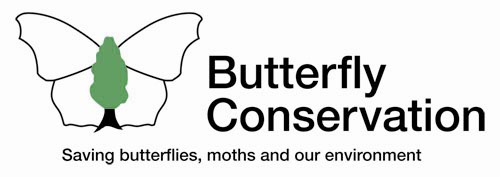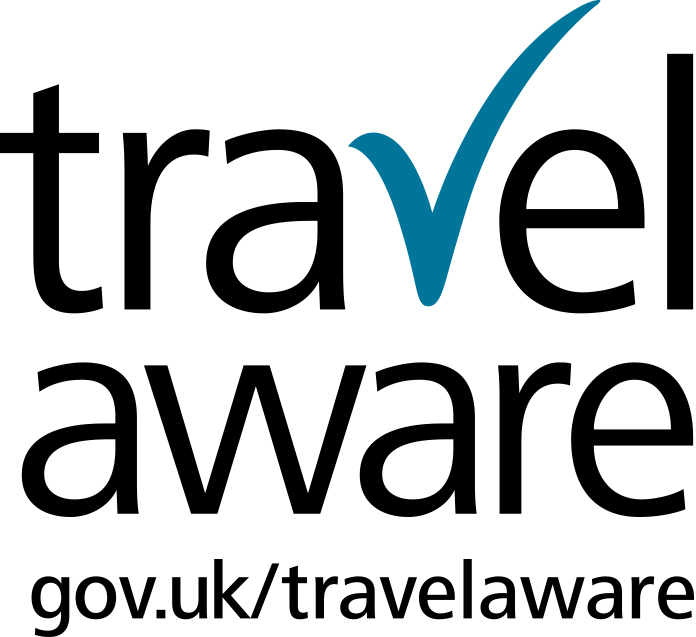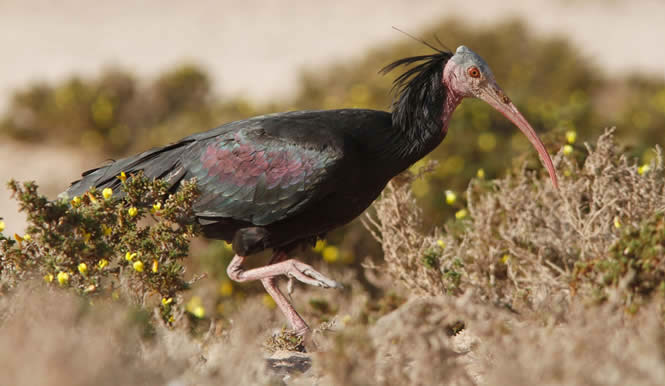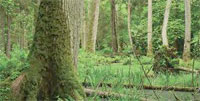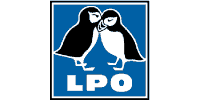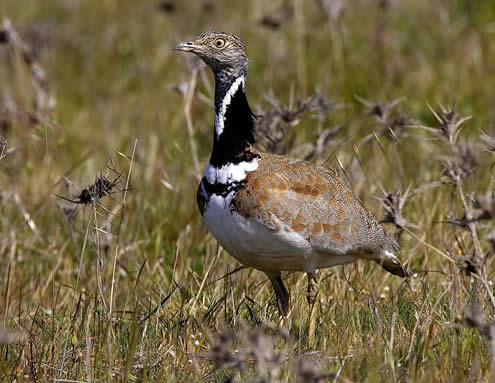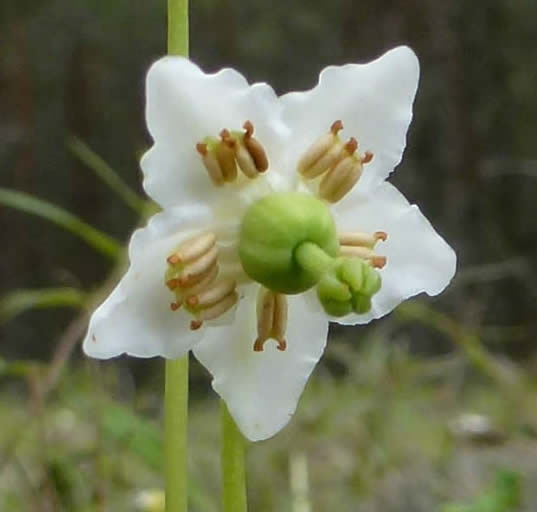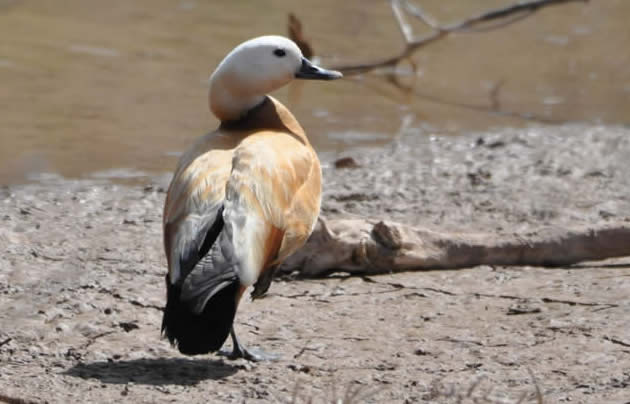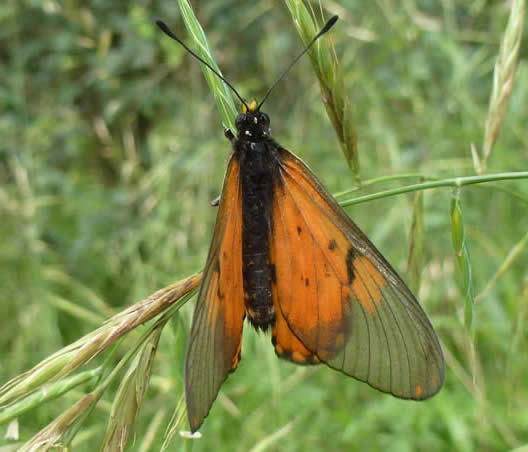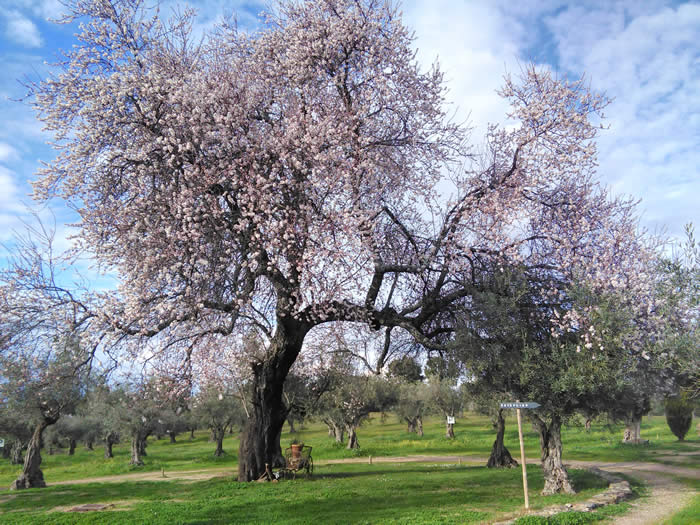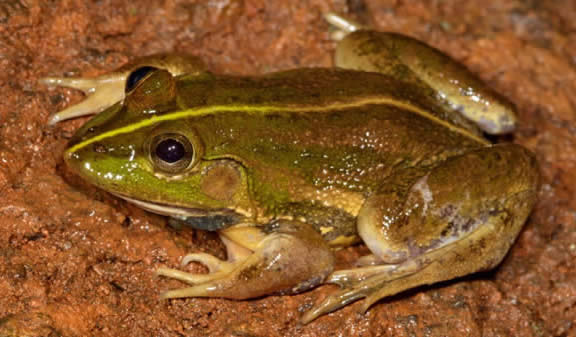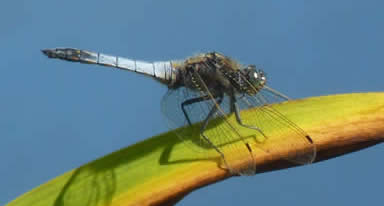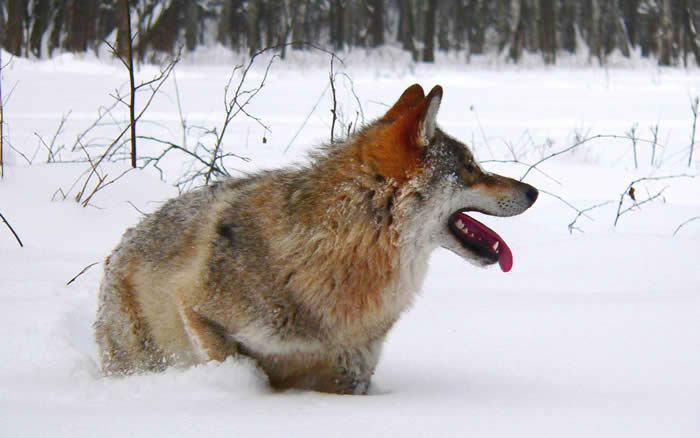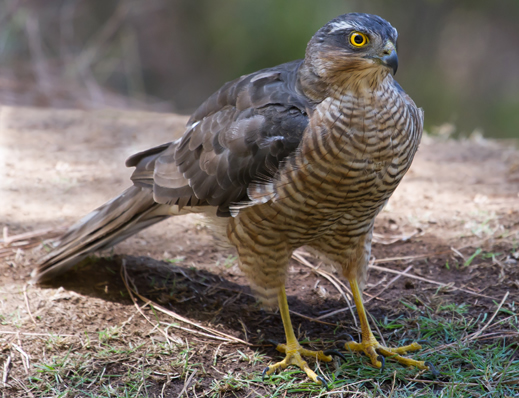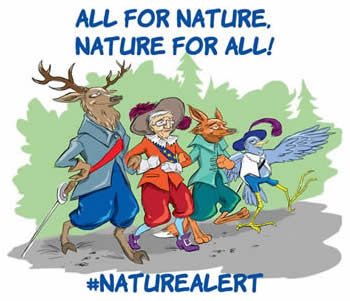Honeyguide news archive 2017
Honeyguide’s third autumn visit to Algarve & Alentejo (November 2017) was blessed with cloudless skies and temperatures in the low twenties throughout, writes Rob Macklin. The first half of the trip was based at Alte. The reserve at Castro Marim on the Guadiana Estuary again came up trumps with 20+ species of wading birds, excellent views of spoonbills and greater flamingos, two Audouin’s gulls, excellent views of an osprey and booted eagle plus an amazing 160 white storks on migration.
The imposing cliffs at Rocha de Pena allowed us to get great views of several blue rock thrushes and we were fortunate to find two ring ouzels here. The highlight of the day had to be 100+ griffon vultures drifting along the ridge, a magnificent sight! The Castro Verde grasslands were full of birds and we found golden and Bonelli’s eagles and a black vulture here. In superb evening light we located 26 great bustards on a hillside with hoopoes and little owls in the foreground.


Red-veined darter, abundant in Algarve; common dolphins by the boat on a pelagic trip (Brennan Aunger). Holiday report here.
The second part of the week was based at Vila do Bispo. The Algarve had suffered from very little rain and high summer temperatures so most of the vegetation was burnt off. However the birds were brilliant including Spanish imperial eagle at Sagres, 160 glossy ibises at Salgados, at least seven bluethroats at the Alvor Estuary and alpine accentors at the Cape de São Vicente. A fantastic week in good company with sun-filled days and warm nights!

Lagoa dos Salgados nature reserve.
How did our first group in Brazil's Pantanal get on? Honeyguider Jo Simons writes: “The journey was a bit of an ordeal but so worth it. That place is a 'Wow!' a minute, Mundi and I were beside ourselves with excitement. We saw more birds before breakfast than we usually see in a month. The programme was excellent with a great variety of habitats and wonderful opportunities to watch wildlife close up. I never imagined that I would see jaguars close up.
"Watching wildlife from a boat works really well. We had brilliant views of giant river otters, black skimmers, and so many birds of prey. One of my favourite things was discovering a striated heron using flies dropped into the river as bait for fish. It took the fly back out and dropped it upstream several times.”


White-eyed parakeet; whistling heron (with a jacana behind); southern crested caracara (Jo Simons). A selection of Gábor and Andrea's photos on Facebook here. Bumper holiday report here.
The final two conservation donations from the Honeyguide Wildlife Charitable Trust this year were £500 to SPEA and £300 to SAVE Brasil, BirdLife partners in Portugal and Brazil, linked to our holidays in Algarve & Alentejo and the Pantanal. Our donations totalled £7,443 in 2017, bringing our running total of donations at the end of 2017 to £119,322. In Portugal, SPEA is using the money to work for better protection of the marine environment, threatened by oil-drilling offshore. |
SUPPORTING
|
Much of Spain has been hot and dry this autumn, reports both Martin Kelsey (see his Extremadura blog) and Honeyguide's Valencia leader Pau Lucio. Pau photographed this Rüppell's vulture at a vulture feeding station at Alcoi.
 |
Rüppell's vultures - critically endangered in sub-Saharan Africa - have been seen in very small numbers in Andalucia in recent years. Alcoi is roughly halfway between Valencia and Alicante, an interesting shift in distribution. This bird is the second of three seen here. The first was tagged with a GPS and has since been in Portugal and Huelva (Andalucia). Rüppell's vultures are about 10 per cent smaller than the similar griffon vultures that they are often with. The adult is dark with dense pale spotting. |
Autumn cranes in Poland: it's a wet autumn in Poland - "terrible weather" says Honeyguide's leader Artur Wiatr. Cranes are gathering in flocks before they move off for the winter: some local birds, some migrants in the 5,000 birds seen around Biebrza Marshes and in the neighbouring Narew River Valley. Artur sent six photos by Piotr Talalaj: one is below and all are on Honeyguide's Facebook. The cranes will be back on the nesting grounds for next May's Poland holiday, for which places are available.

Cranes in Poland, October 2017 (Piotr Talalaj). More photos on Facebook.
The French Pyrenees in early September was a delight as ever, despite flurries of snow and heavy cloud for, thankfully, short times at the high tops. Autumn-flowering Crocus nudiflorus and merenderas were in profusion, and brighter days brought out a big range of butterflies. Lammergeiers and golden eagles put in regular appearances, including at Gèdre where we stayed, where dippers were regular on the rivers. Isard (Pyrenean chamois) and Pyrenean brook newt were two of the special Pyrenean animals found.
We had an inspirational talk from the LPO’s Gwenaëlle Plet: our donation of £1065 went towards the French BirdLife's partner's long-running and successful lammergeier protection project. Holiday report here.
Crocus nudiflorus at Saugué; silhouettes of golden eagles (Jean Dunn); scarce copper, on horse mint (Ivan Nethercoat). More photos from Ivan Nethercoat on Flickr and Chris Durdin on Facebook. Plant galls and fungi were a feature of the holiday expertly helped by group member Mervin Nethercoat: photos on Flickr.
The new Honeyguide brochure has a plug for Butterfly Conservation on the back of the booking form. In recent years we've sent out membership literature for Plantlife and the British Dragonfly Society with the Honeyguide brochure. We explored doing the same for Butterfly Conservation, there wasn't an off-the-shelf leaflet that we could enclose, so instead it's in the brochure.
Butterfly Conservation is offering half-price membership through Honeyguide. Join by Direct Debit via Butterfly Conservation's website www.butterfly-conservation.org, and use the promotional code HONEY to enjoy your first year's membership for just £1.50 a month.
Membership T&Cs: offer applies to new members only joining by Direct Debit. Promo code HONEY valid for Single, Joint or Family membership. Excludes Benefactor membership and membership purchased as a gift.
Butterfly Conservation is very active in my area, including a nature reserve with swallowtails run in partnership with the RSPB, work to help silver-studded blues on Norfolk's heaths and for unusual moths in the Brecks.
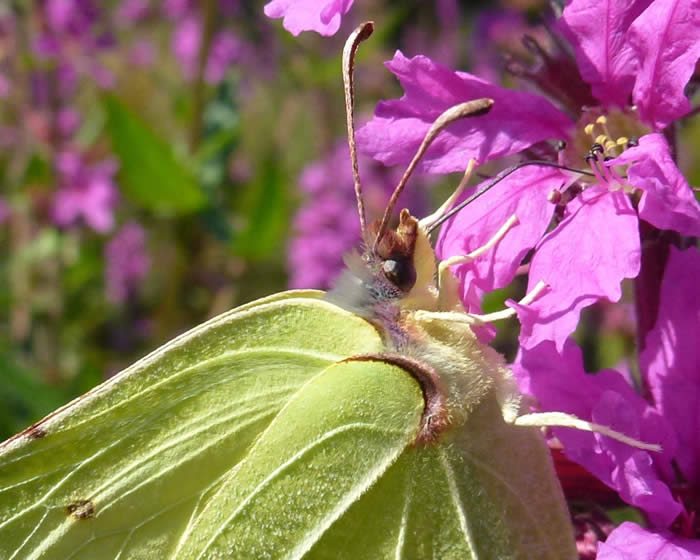
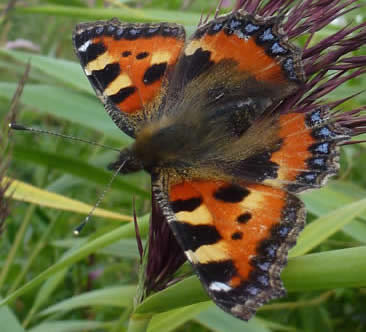
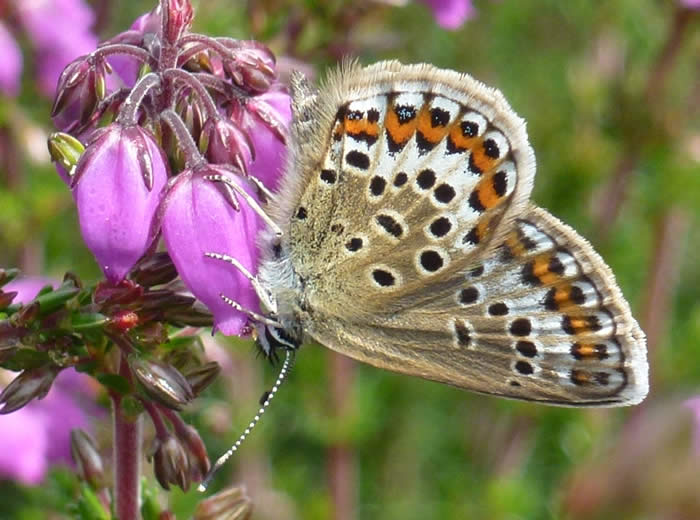
Brimstone close-up, small tortoiseshell on reed and silver-studded blue (all in Norfolk).
There is increased awareness in the travel world of making FCO information readily available, especially since the beach attack in Tunisia in 2015.
As well as safety and security information, the FCO website contains useful information about health, local laws, what help the Foreign & Commonwealth Office (FCO) can provide if something goes wrong and much more.
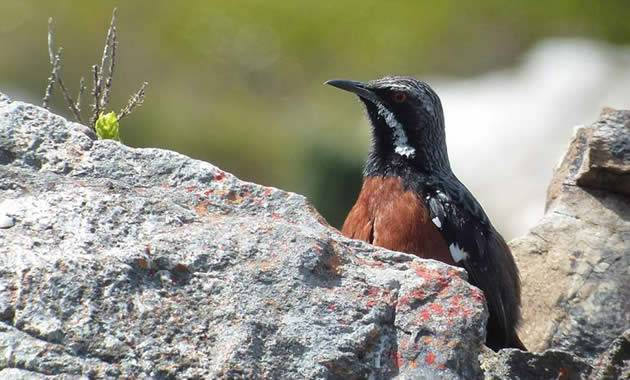
Cape rockjumper, a sought-after bird in South Africa's Southwest Cape — there are places still available on this autumn's holiday. See 'First, catch your rockjumper', right.
This story is part of a wider project on the conservation status of Cape endemics. Geoff Crane, Honeyguide's leader in South Africa, donated 2,000 rands to the Cape endemics conservation fund following Honeyguide's SW Cape holiday in autumn 2015 (report here), complementing Honeyguide's donation to bird survey project SABAP2.
Elsewhere in South Africa, BirdLife SA is looking onto establishing a new colony for African penguins, in addition to the two in SW Cape visited by Honeyguide. The new site will be farther east to attempt to link the SW Cape population with those in the Eastern Cape. More on this here.
Danube Delta: the first mistake was trying to count squacco herons, says participant Ian Holmes. Ian's other highlights included 'kingfisher alley', the first river channel in the Delta; 18 white-tailed eagles during the week; and white pelicans and cormorants fishing together. The last is no co-operative: the pelicans are like Chinese fishermen, grabbing the cormorants by the neck to get their catch. Bonuses from the Carpathians holiday extension included nutcracker and a lesser spotted eagle on a post on the group’s journey to see brown bears. Holiday report here.
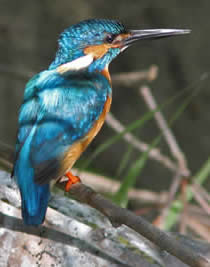
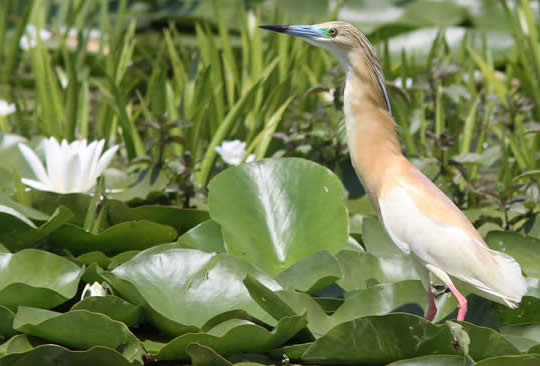
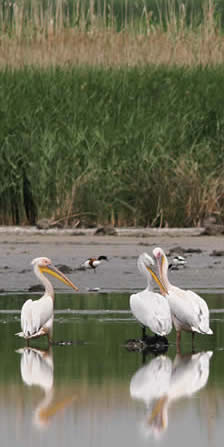
Kingfisher; one squacco heron can be counted; pelicans (Judith Wells).
Estonia's winter extended into April, including late snow, so it was as much spring as summer for Honeyguide's group in early June - happily arriving with good weather. Lady's slipper orchids and pasque flowers were still blooming. Golden jackal was a surprise at the bear hide: brown bear and raccoon dog were part of the show, and from a viewing tower a group of elks ambled across. Woodpeckers included middle spotted and white-backed. Estonia itself was a highlight, said one group member, including walking through Tallinn and a tour of a former railway station, now a café.

Wood sandpiper; below, elks. These and other Estonia images by Ivan Nethercoat; more on flickr. Holiday report here.

There a conservation contribution with every Honeyguide holiday and from our Estonia holiday in early June £470 was given to the Estonian Fund for Nature (ELF). This helps to fund volunteer working camps to enhance the breeding habitat / feeding places of the black stork. The nest of one pair of the black storks being helped is on this webcam.
The stork Eedi has a radio-transmitter, and his migration route is followed here. ELF web page, dedicated to the black-stork and its conservation needs here.
Cévennes: it’s always a gamble, write leaders Robin and Rachel Hamilton, putting a pin in a date eighteen months in advance for a holiday where so much depends on hitting the prime time for so many things. In the event, we couldn’t have been luckier. The gorgeous sweeps of colour in the causse grassland were at their peak and we even found one of the best displays ever of the endemic Aveyron bee orchid, Ophrys aveyronensis.
Butterflies were abundant and brilliant and the spring bird song was in full swing – about five nightingales singing their hearts out in the gardens at la Gare aux Ânes. The medieval villages, the cavern of Aven Armand, the astonishing Millau Viaduct all amazed as ever, and the plentiful supply of Roquefort cheese delighted (almost!) everyone.



Adonis blue (Ron Fitton and Val Appleyard), Aveyron orchid, broad-bordered bee hawkmoth (Heather and Leslie Green). Holiday report here.
Hungarian rhapsodies: Helen Crowder was with a private group of Honeyguiders in Kiskunság National Park, Hungary. She writes: Meadows of wildflowers and butterflies; iridescent rollers against a blue sky; red-footed falcons with chicks in nestboxes; saker falcon family high on a pylon; fields fringed with corn cockle; little bitterns flying across a stream; whole acres of poppies; lesser purple emperor in a tree.
White-tailed eagles close to the nest; marsh harrier mobbing an imperial eagle and looking small in comparison; moth trap full of tigers, hawks, foxes and a small elephant; a wall of bee-eaters; dragons and damsels; fire-bellied toad displaying its vocal sac; a sleepy long-eared owl; parachuting pipits; bustards bustling; the soundscape of cuckoos, nightingales, turtle doves and golden orioles – these are a few (!) of my favourite things. All enhanced by convivial company and outstanding leadership.



Common glider; poppy field; red-footed falcons in a nestbox, three of
Helen Crowder's favourite Hungarian things. Holiday report here.
La Mancha was again a delight, combining the wetlands of La Mancha Húmeda and the limestone hills of the Serranía de Cuenca, writes Chris. Near our first base of Belmonte, two eagle owl chicks were a highlight, along with a close and calling little bustard in arable. Egyptian vultures low overhead while we watched an ocellated lizard near the amazing limestone pillars of Los Callejones was a nice moment. Flowers were brilliant, from arable to limestone specialists, including many species absent from field guides and lots of orchids. Warm weather brought out butterflies, 40 species including Spanish fritillary and Spanish heath. Holiday report here.


Ocellated lizard, windmills in Don Quixote country and Egyptian vulture. (La Mancha photos by Pau Lucio & Chris Durdin). Facebook photo set here and new web page La Mancha flora.
Poland (May 2017) was one of the most memorable wildlife holidays I've experienced in many years, writes Honeyguider Geoff Morries. There were so many highlights it's difficult to list them all. The birds were quite exceptional: I think my favourite bird overall has to be the white stork, but the Montagu's harrier, penduline tit (and its nest), pygmy owl, and the song of the thrush nightingale are all up there near the top. One very special moment at Biebrza: I'd left the group and walked a short way to answer a call of nature only to realise that, no more than three metres in front of me, was a beaver busy munching willow shoots.
Not since I was in the Okavango Delta in Botswana many years ago have I experienced anything like this. I half expected to see a lion emerge from the undergrowth! (But an elk is pretty good, too). I shall never look at a lowland river valley in Britain in the same way again: I now find myself constructing mental maps of what the landscape would look like if the rivers back home were allowed more of a free rein. Every ecologist and naturalist should make a point of visiting these places if they can.
Landscape-scale wetlands in Poland: more photos in the holiday report.
A successful Honeyguide holiday in southern Slovenia has just been completed, based in accommodation on the Logar family farm in Žerovnica on the eastern shore of Lake Cerknica with both wryneck and red-backed shrike in the garden.
The Notrajnska region of Slovenia is largely karstic, with limestone mountains separating broad damp plains called poljes. Highlights included six species of fritillary butterfly (larvae and adults) on the flowery meadows at Senožeče, the amethyst meadow squill at its only site in Slovenia and a magnificent male large copper feeding on fen ragwort at the Isola della Cona Nature Reserve, our last site before proceeding to the airport. Contributed by Paul Tout, May 2017.



Amethyst meadow squill (Scilla litardierei), a southern Balkan species with a single station in Slovenia. Male large copper (Lycaena dispar) on fen ragwort (Jacobea paludosa).
Snežnik Castle, a 13th-century castle located just south of Lake Cerknica. Holiday report here.
It was an excellent year to be on Crete. The orchids above Spili were as good as I've seen them and the tulips, crown anemones and widow irises on the Omalos Plateau the best I've seen writes Chris.
One wet day gave ideal conditions for falls of migrants: flycatchers everywhere, including my first ever semi-collared, golden orioles, wood sandpipers and little stints. Co-leader David Collins had a surprise going through photos of migrant swallows in Plakias: a red-breasted eastern Mediterranean swallow (right). Lovely warm weather on most days and tasty taverna meals all added to a great experience. See also Cretan Bluet (damselfly). Holiday report here and photos on Facebook here.
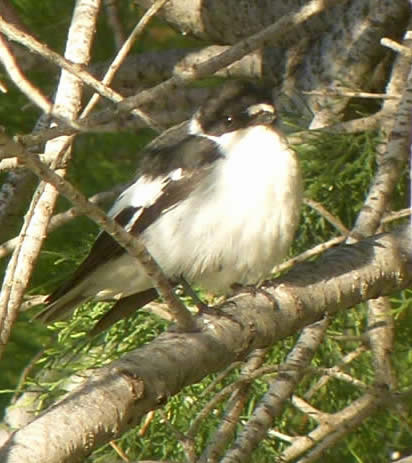
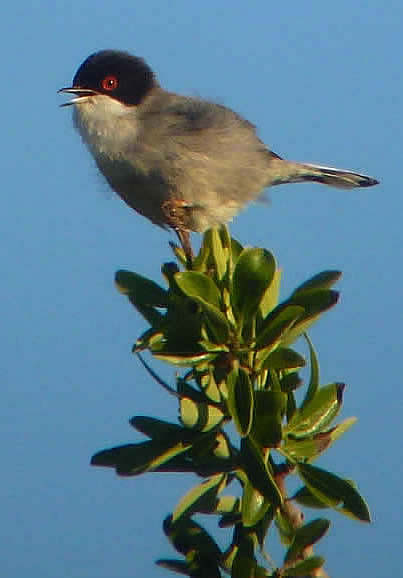
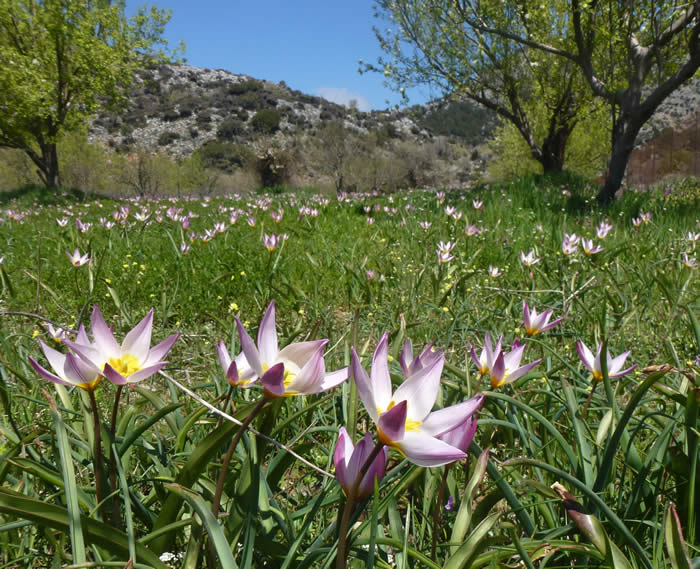
Semi-collared flycatcher, Sardinian warbler, Tulipa bakeri on Omalos Plateau. The record of semi-collared flycatcher was accepted by the Greek Rarities Committee, which noted that it passes through Crete in "very small numbers", and will appear in the 2017 annual report.
There were plenty of holiday highlights in Extremadura writes Chris. My best ever view of Spanish imperial eagle was almost outdone by a plummeting short-toed eagle by the same cliffs in Monfragüe National Park. Male and female lesser spotted woodpeckers were drumming nearby on one pre-breakfast walk.
We found a hoard of feeding griffon vultures making a good job of tidying up a sheep carcass. Three species of wild daffodils were at their best as were Iberian fritillaries and orchids close to our base at Finca Santa Marta. Honeyguide's 20th group at the Finca mostly went to familiar places, but Mérida's Roman Bridge was a novelty, from where there was a close purple swamphen.
Lesser spotted woodpecker, Iberian fritillary and purple swamphen in Extremadura. More photos on Facebook, and holiday report here.
The Tarifa & Morocco holiday in Feb/March, write Simon Tonkin and Niki Williamson, had three bases – the tranquil eco-lodge of Huerta Grande in the village of Pelayo near Tarifa; a characterful colonial-style hotel in the bustling Moroccan town of Larache; and a traditional family-run guest-house in the exquisite blue-washed Moroccan mountain town of Chefchouen. It yielded a great quality bird list from European farmland and cork oak forest, Moroccan mountain habitats and wetlands and salt pans on both sides of the Straits, as well as views of hundreds of migrating black kites, short-toed eagles and other raptors.
Highlights included excellent views of Moroccan marsh owl, lesser kestrels, black-eared wheatear, hawfinches, northern bald ibis, slender-billed and Audouin’s gulls, blue rock thrush, great spotted cuckoo, brown-throated and crag martins and purple swamphen. Non-avian highlights came in the form of monarch and Spanish festoon butterflies, Portuguese sundew, and of course superb local food and culture throughout. Holiday report here.
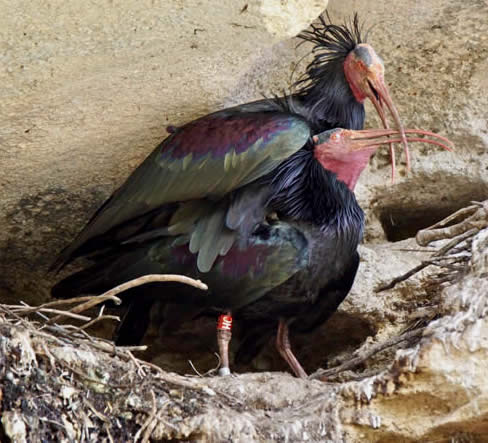
Black-eared wheatear and Audouin's gull (Rob Carr); bald ibises on the nesting cliffs (Simon Tonkin and Niki Williamson). Honeyguider David Bennett's photos from 2017 on OneDrive here.
Where to start describing two weeks late Jan/early Feb in the Drakensberg Mountains and Zululand? Wonderful mountain scenery, exotic and varied birds and mammals outside the three accommodations, from gentle warmth to tropical heat, good hospitality everywhere. A fortnight on and participants are still sorting through thousands of photos: here are just a few.
General photos - places, some mammals and birds - on Facebook here. I made a special effort to record dragonflies and damselflies of the Drakensbergs and Zululand writes Chris: Facebook album here from the holiday. Also orchids of the Drakensbergs on Facebook here and a set of butterflies here. Holiday report here.
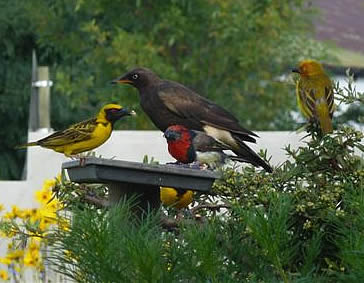
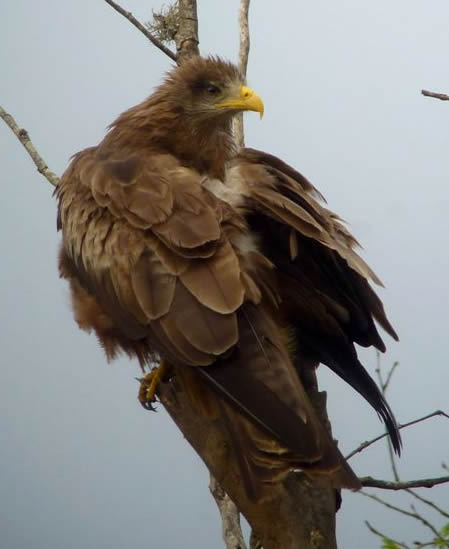
Bird table at Wakkerstroom, with
southern masked weaver, pied starling, black-throated barbet and Cape weaver; red bishop; yellow-billed kite.
Are wood-meadows an under-appreciated habitat? Reading a paper in British Wildlife makes me think so, writes Chris Durdin. Here is a new web page to celebrate the wonderful wood-meadows of Estonia. Wood-meadow with alpine bistort. |
Pau Lucio, Honeyguide leader in La Mancha and Valencia, has just returned from a successful Iberian lynx trip in Andújar Natural Park, Andalucía. He took the photos of this superb mammal, below. The 2016 census of lynx is nearly complete and states that there has been an increase of 28 to a total of 389, compared with the 2015 census when 361 individuals were recorded. The provisional count confirms the upward trend that has been occurring during the last year despite the negative influence that hemorrhagic disease has had on the wild rabbit populations in the Iberian Peninsula. A summary of the report in English) can be read here.
Honeyguider leader Ivan Nethercoat's daughter Katie is, like dad, a keen photographer. They went to Poland on a photographic challenge to take bison photos. These are two of Katie's pictures below; there's a set on Honeyguide's Facebook here and more on her website.
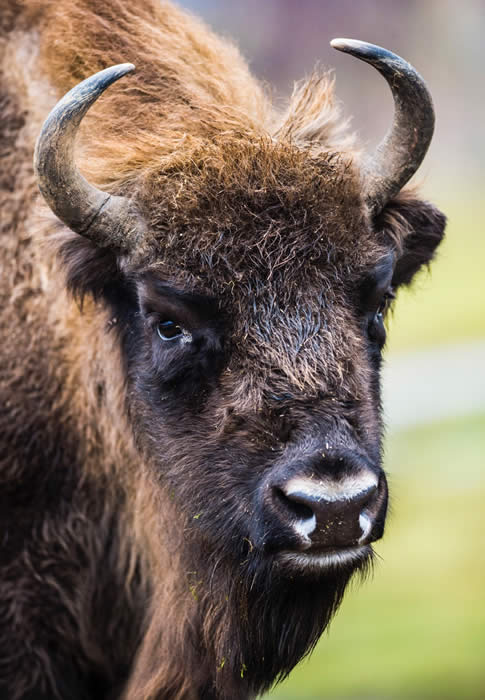
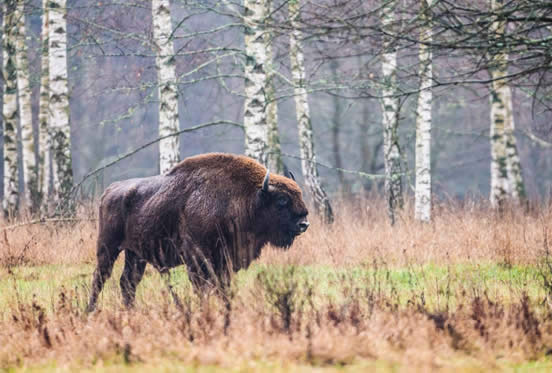
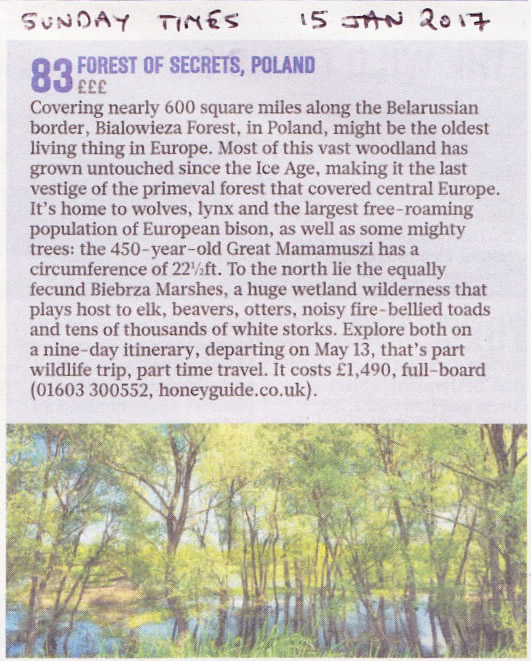
Honeyguide's Poland holiday in the Sunday Times: 'The Best 100 Holidays of 2017' Sunday Times supplement of 15 January 2017 includes our holiday in Biebrza Marshes and Białowieża Forest, Poland.
Have I got old news for you? . . . News 2024 . . . News 2023 . . . News 2022 . . . News 2020-21 . . . News 2019 . . . News 2018 . . . News 2016 . . . News 2015. . . News 2014 . . . News 2013 . . . News 2012 . . News 2011 . . . News 2010 . . . News 2009 . . . News 2008 . . . Back to current news page








